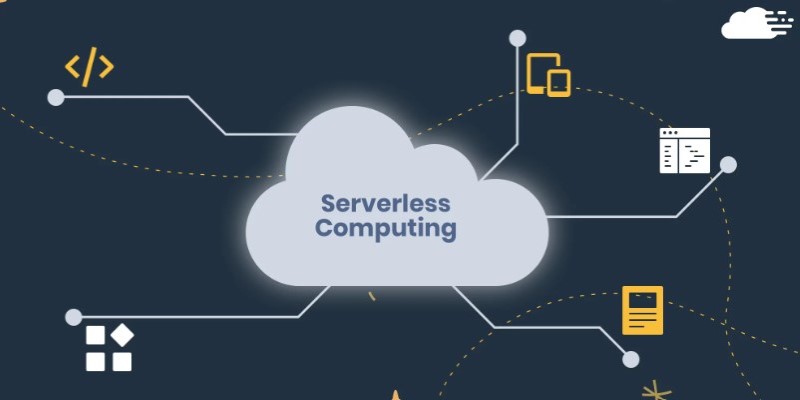- Electronics & Tech News
Cloud Computing Trends in 2024&2025: What's New And Next
Cloud computing has been a driving force in the tech industry for over a decade, reshaping how businesses operate, store data, and deliver services. As 2025 approaches, several trends are emerging that promise to further revolutionize this space. Understanding these trends can help organizations make informed decisions about their cloud strategies and investments. This article dives into the latest developments in cloud computing, highlighting innovations and changes that are shaping the future of this technology.
The Rise Of Hybrid And Multi-Cloud Environments
One of the most significant trends in cloud computing is the increasing adoption of hybrid and multi-cloud environments. Organizations are recognizing the value of not putting all their eggs in one basket. By leveraging multiple cloud services from different providers, companies can optimize their IT resources, improve resilience, and enhance flexibility.

Hybrid cloud solutions combine public and private cloud services, allowing businesses to keep sensitive data secure in a private cloud while utilizing the scalability of public clouds for less sensitive operations. This flexibility enables organizations to choose the best environment for each workload, which can lead to better performance and cost efficiency.
Moreover, multi-cloud strategies are becoming popular as companies aim to avoid vendor lock-in and take advantage of the unique features offered by different providers. By distributing workloads across various platforms, organizations can enhance their redundancy and ensure that they can swiftly adapt to changing business needs or disruptions in service.
Serverless Computing Gains Traction
Serverless computing is another trend gaining momentum in 2025. This model allows developers to write and deploy code without worrying about the underlying infrastructure. Instead of provisioning and managing servers, businesses can focus on building applications and services. Serverless architecture automatically scales applications based on demand, which can lead to significant cost savings and improved efficiency.

The increasing need for agility in application development fuels the growth of serverless computing. Organizations can rapidly deploy new features and updates without the need for extensive infrastructure management. This trend aligns with the growing emphasis on DevOps practices, where speed and collaboration are essential for success.
As serverless platforms continue to mature, they offer more robust features, including better integration with machine learning, IoT, and real-time data processing capabilities. These advancements enable businesses to harness the full potential of cloud technology, transforming how they develop and deliver software solutions.
Enhanced Focus On Cloud Security
With the rapid shift to cloud services, security remains a paramount concern for organizations. In 2025, there will be an enhanced focus on cloud security as businesses seek to protect sensitive data from breaches and cyberattacks. The increasing sophistication of cyber threats has pushed cloud providers to prioritize security features and compliance measures.

Cloud security now encompasses a wide range of strategies, including encryption, identity and access management (IAM), and advanced threat detection. Organizations are investing in security tools that can monitor and respond to threats in real-time, ensuring that their data remains protected.
Additionally, compliance with regulations such as GDPR, HIPAA, and CCPA has become critical for cloud service providers. Businesses are looking for solutions that not only provide robust security but also help them meet regulatory requirements. As a result, many cloud providers are enhancing their compliance certifications and offering tools that facilitate adherence to various standards.
Artificial Intelligence And Machine Learning Integration
Artificial intelligence (AI) and machine learning (ML) are becoming integral parts of cloud computing. In 2025, the integration of AI and ML into cloud services will enable organizations to leverage data in unprecedented ways. Cloud providers are offering AI-powered tools that help businesses analyze vast amounts of data, identify patterns, and make data-driven decisions.

AI and ML applications in the cloud span various industries, from finance to healthcare. For instance, businesses can use predictive analytics to anticipate customer behavior, optimize supply chain management, or enhance fraud detection. Harnessing AI capabilities through the cloud allows even small businesses to compete with larger enterprises.
Moreover, cloud-based AI services are becoming more accessible and cost-effective. Many providers now offer AI tools that require minimal technical expertise, allowing organizations to implement advanced technologies without the need for extensive resources. This democratization of AI is fostering innovation across sectors, as businesses can now experiment with new applications and services powered by machine learning.
Sustainability And Eco-Friendly Practices
As concerns about climate change and environmental sustainability grow, cloud computing is also evolving to meet these challenges. In 2025, many cloud providers are prioritizing eco-friendly practices and sustainable operations. The energy consumption of data centers has come under scrutiny, leading organizations to seek solutions that minimize their carbon footprint.

Cloud providers are investing in renewable energy sources to power their data centers and are increasingly adopting energy-efficient technologies. This trend aligns with the broader corporate responsibility initiatives that many companies are embracing. By choosing cloud services that prioritize sustainability, organizations can contribute to environmental efforts while also appealing to eco-conscious consumers.
Furthermore, sustainability in cloud computing also encompasses resource optimization. Many cloud platforms now offer tools that help businesses monitor and reduce their energy consumption, ensuring that they are using resources efficiently. This focus on sustainability benefits the environment and can lead to cost savings for organizations.
Edge Computing And Its Importance
Edge computing is an emerging trend that complements cloud computing by processing data closer to the source of generation. With the rise of IoT devices and the need for real-time data processing, edge computing has gained traction in 2024. This approach reduces latency and enhances the performance of applications that require immediate responses.
By bringing computation and data storage closer to the end-user, organizations can deliver faster services and improve user experiences. For example, in industries like manufacturing and transportation, edge computing can enable real-time monitoring and analytics, allowing companies to respond quickly to issues as they arise.
Conclusion
Cloud computing continues to evolve rapidly, driven by technological advancements and changing business needs. The trends emerging in 2024, such as the rise of hybrid and multi-cloud environments, the growing adoption of serverless computing, an enhanced focus on security, and the integration of AI and ML, are shaping the future of this technology.
As organizations navigate this landscape, they need to stay informed about these trends and consider how they can leverage cloud solutions to enhance their operations. The emphasis on sustainability and the importance of edge computing further illustrate the dynamic nature of the cloud computing space. By embracing these trends, businesses can position themselves for success in an increasingly digital world.





